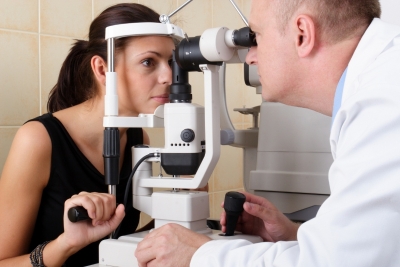
Strabismus, which is known more commonly as “cross-eyes” or “crossed eyes,” happens when both the eyes are not looking in the same direction. This condition typically develops by the time a child turns three. Strabismus usually results from issues with the eye muscles, nerves which transmit a signal to the muscles. It is also associated with the control center in the brain that directs the eye movements. The more common strabismus types include: – Intermittent Exotropia: This form of strabismus will occur when either one or both the eyes points beyond an object that is being viewed, caused from the inability to coordinate each of the eyes. The side effects of this condition include headaches, severe eye strain, difficulty reading and vision problems when in direct sunlight. Contact lenses or eyeglasses Patching the eye that is stronger Prism Lenses, these are the type of lenses that change the light that enters the eye, which helps to decrease the level of turning an eye is required to do in order to focus correctly Vision Therapy, which involve several types of eye exercises which assist in improving coordination as well as the ability of the eyes to focus Surgery Some of the known risk factors associated with developing this condition include: Family history or genetics Uncorrected farsightedness A number of medical conditions that include: brain tumors, thyroid disorders, hydrocephalus, cerebral palsy and Down syndrome Head injuries StrokeStrabismus Explained by Williamston
In eyes that are normal, six muscles which are attached to each of the eyes will work together, receiving signals that the brain gives to direct the movements of each eye. With strabismus, one of the eyes can turn down, up or out, independently from the opposite eye. This might occur always or when then the eye becomes strained or when the person is sick or tired. If you are concerned that you or your child may have this condition, be sure to schedule an eye exam with one of our Williamston Eye Doctors at Clarity Vision. They will be happy to guide you through a thorough diagnosis and treatment options.
STRABISMUS TYPES
– Accommodative Esotropia: This strabismus type occurs due to uncorrected farsightedness, with the additional strain that is required to keep the eyes focused causing the eye or eyes to turn inwards. The symptoms can include covering or closing the affected eye when doing close work or reading, double vision, and turning or titling the head when attempting to focus correctly.
TREATMENTS FOR STRABISMUS
RISK FACTORS
SURGERY FOR STRABISMUS
Ophthalmologic surgeons may suggest surgery which is aimed at aligning the eyes in the way of changing the position or the length of the surrounding eye muscles. These surgical procedures are typically outpatient based performed while a patient is sedated under a general anesthesia.
The surgery will either involve the surgeon tightening or loosening the muscles in the eye, with the goal of correcting the alignment in one or both the eyes. In certain cases, a suture that is adjustable will be used for correcting the alignment of the eyes once the surgery is completed.
After the procedure the patient may be required to use antibiotic eye-drops and an eye-patch. In most cases the surgeon will also suggest vision therapy which improves the chances of lasting success.
















